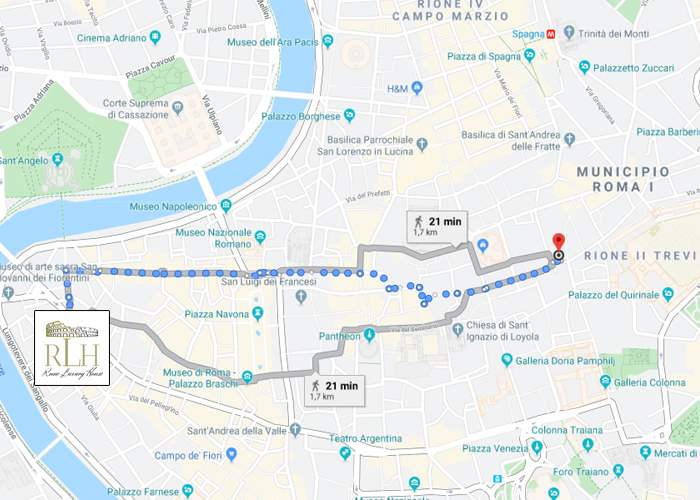Trevi Fountain
- by admin admin
- 2 dic 2019
- 4732 Views
The most famous fountain in Rome and Italy, and probably in the world, is the Trevi Fountain inaugurated on 22 May 1762. Scenic and majestic, with the sound of water merging with the shouting of tourists intent on launching the famous "coin of return to Rome".
The fountain inaugurated in 19 B.C. and designed by M. V. Agrippa, it is the only example of the ancient Roman aqueducts, the Acqua Vergine, which has remained in operation since the time of Augustus up until our days. Its name is probably due to the presence of the crossing of three roads or to the triple outlet of water.
As early as 1453, Pope Nicholas V started the restoration of the aqueduct following the projects of Leon Battista Alberti and Bernardo Rossellini. The name of Acqua Vergine is linked to a legend: a girl (virgo) would have indicated the place of the springs to the soldiers. The architects created a prospectus of the fountain embellished by an inscription with the coat of arms of the pontiff and the Roman people under which the water, emitted by three jets, collected in a rectangular basin.
In 1640 Pope Urban VIII Barberini decided that the fountain had to change orientation and entrusted the project to Bernini, who put in place a new base with a tank in front in which three water mouths meet. In 1732 Pope Clement XII Corsini organizes a competition: the Pope prefers the project of the architect Salvi, because it is more monumental and respects the Poli palace behind it. The architect Salvi worked there from 1732 until 1752, the year of his death, flanked by his friend Vanvitelli.
The central part of the Trevi Fountain facade develops like a triumphal arch, with a deep niche with Corinthian columns at its side and a large composition in the center. The majestic statue of Ocean emerges, driving a chariot in the shape of a large shell, pulled by two winged sea horses, one rabid and the other peaceful, led by a young and mature newt that symbolize the different characteristics of nature and the ages of man. On either side of the niche are the statues of Della Valle's Salubrity and Abundance, the reliefs depicting the Virgin showing the spring to the soldiers by Grossi, and Agrippa who consented to the construction of the Bergondi aqueduct. There are four great statues of 173: from the left, the Abundance of Corsini's fruits, the Fertility of the Ludovisi fields, the Autumn gifts of Queirolo and the Amenity of Pincellotti's meadows.





